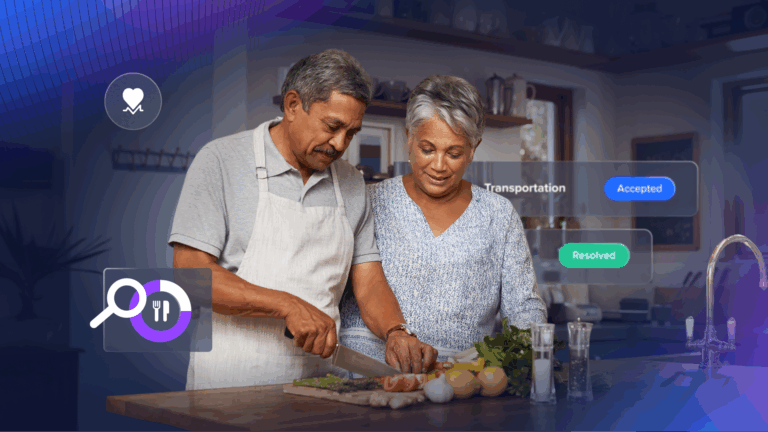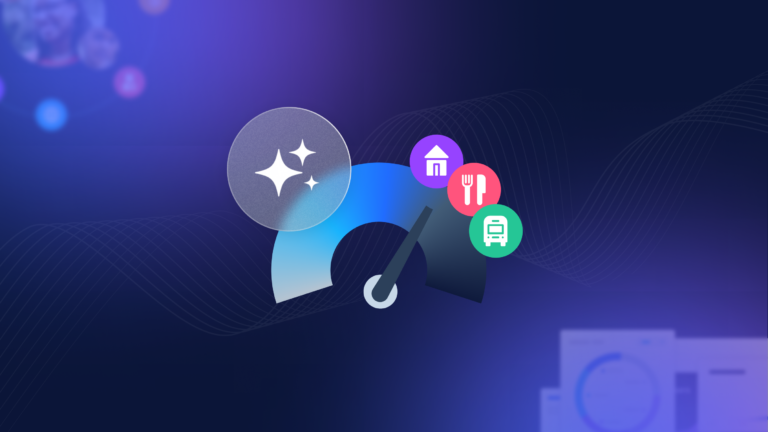
What is FHIR?
Exploring the key benefits of FHIR integration for healthcare providers and health systems.
Effective data sharing is critical for bridging the gaps between healthcare and community-based care. But historically, siloed systems and disconnected workflows have made it difficult to communicate back-and-forth, track patient needs, and deliver impactful outcomes across the continuum of care.
That’s where FHIR comes in.
What is HL7 FHIR?
FHIR (Fast Healthcare Interoperability Resources) is a modern healthcare data exchange standard maintained by HL7 (Health Level Seven International, a standards-developing organization) that enables healthcare systems, community-based organizations (CBOs), and technology platforms to seamlessly and securely exchange patient data.
This work standardizes the exchange of granular patient data and makes it easier for different systems to communicate. Providers can choose which data to surface at the point of care– resulting in more seamless workflows, less burden on staff, and more successful connections to resources.
FHIR in Action to Address Non-Medical Needs
To truly achieve whole-person care and make strides in reducing healthcare costs while improving outcomes, we must advance and simplify the comprehensive exchange of patient data. FHIR, initially designed for clinical data, is increasingly being used for sharing screening data such as housing, food insecurity, and transportation needs. These non-clinical factors have a direct and proven impact on health outcomes and healthcare costs, but until recently, a standardized method for data exchange between healthcare systems and community-based systems didn’t exist.
That’s where initiatives like the Gravity Project, a collaborative public-private initiative, come in. The Gravity Project is leading the national effort to develop FHIR-based data standards to represent social needs. This includes common data elements like:
- Screenings — Did the patient screen positive for a social need?
- Referrals — Was the patient referred to a community-based organization?
- Outcomes — Did the patient receive the service, and what was the result?
By establishing clear, consistent definitions and implementation guidelines for this data, the Gravity Project is enabling this information to be meaningfully shared and understood across systems—without ambiguity.
Key Benefits of FHIR
Implementing FHIR can open the possibility of a wide range of benefits:
- Solution Flexibility: Organizations can tailor data exchange and workflows to fit their specific needs. This allows clinical practices to iterate over time, surfacing the right data to improve decision-making at the point of care.
- Staff Efficiency: Manual tasks like scanning documents or re-entering data into spreadsheets can be minimized. Automating these processes saves time, improves operational efficiency, and allows staff to focus more on direct patient care.
- Improved Care Coordination: Care teams can connect patients to trusted community resources, track their total care journey, and improve health outcomes at scale.
- Streamlined Reimbursement: With standardized data, organizations can better track non-medical screenings and interventions, making it easier to bill for these essential services and demonstrate value to payers.
- Future-Proof Operations: By adopting FHIR, organizations can strongly position themselves to meet new healthcare requirements around interoperability and easily integrate emerging technologies as the healthcare landscape evolves.
How Unite Us Supports FHIR
Unite Us enables healthcare organizations to integrate drivers of health into their workflows using both SMART on FHIR apps and customizable FHIR APIs. Whether you’re just getting started or scaling a statewide initiative, we make it easier to share, track, and act on data to get clients connected to the care they need—no matter the system.
Want to learn more about applying FHIR to drivers of health and how Unite Us can help? Read the full whitepaper here!



